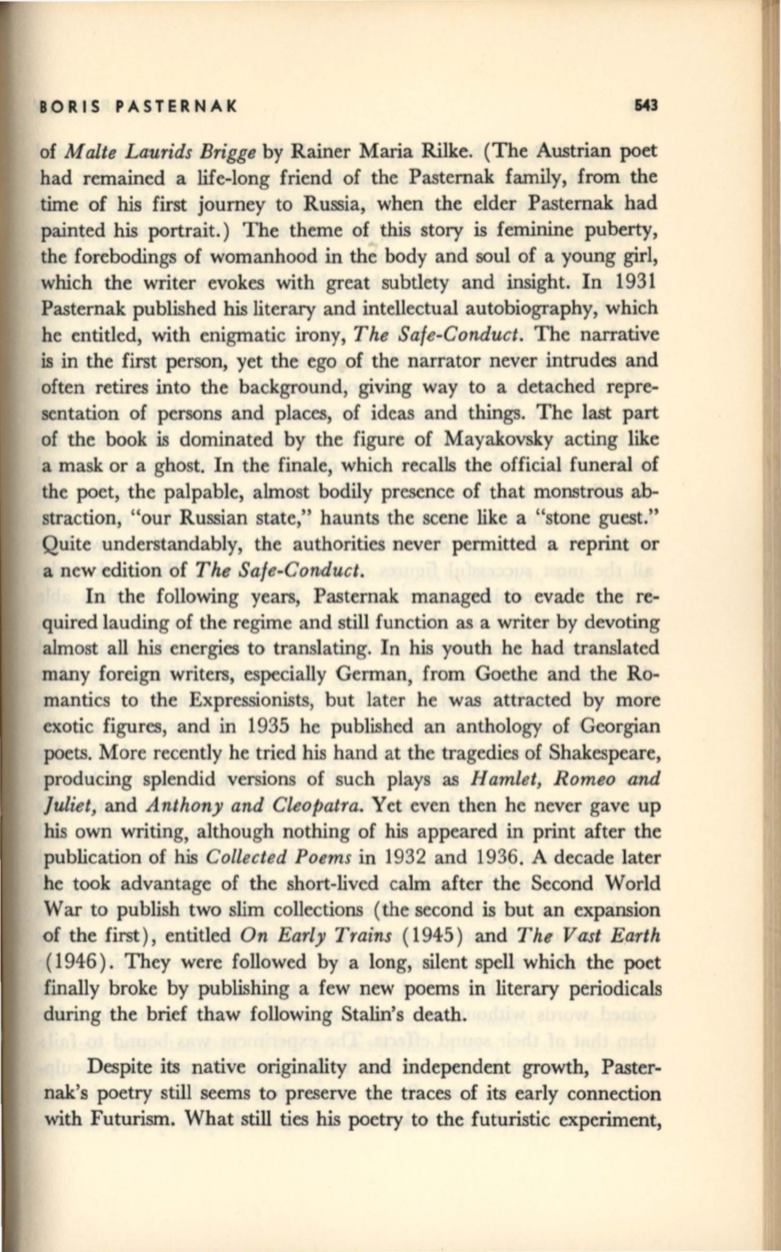
BORIS PASTERNAK
543
of
M aIte Laurids Brigge
by Rainer Maria Rilke. (The Austrian poet
had remained a life-long friend of the Pasternak family, from the
time of his first journey to Russia, when the elder Pasternak had
painted his portrait.) The theme of this story is feminine puberty,
the forebodings of womanhood in the body and soul of a young girl,
which the writer evokes with great subtlety and insight. In 1931
Pasternak published his literary and intellectual autobiography, which
he entitled, with enigmatic irony,
The Safe-Conduct.
The narrative
is in the first person, yet the ego of the narrator never intrudes and
often retires into the background, giving way to a detached repre–
sentation of persons and places, of ideas and things. The last part
of the book is dominated by the figure of Mayakovsky acting like
a mask or a ghost. In the finale, which recalls the official funeral of
the poet, the palpable, almost bodily presence of that monstrous ab–
straction, "our Russian state," haunts the scene like a "stone guest."
Quite understandably, the authorities never permitted a reprint or
a new edition of
The Safe-Conduct.
In the following years, Pasternak managed to evade the re–
quired lauding of the regime and still function as a writer by devoting
almost all his energies to translating. In his youth he had translated
many foreign writers, especially German, from Goethe and the Ro–
mantics to the Expressionists, but later he was attracted by more
exotic figures, and in 1935 he published an anthology of Georgian
poets. More recently he tried his hand at the tragedies of Shakespeare,
producing splendid versions of such plays as
Hamlet, Romeo and
Juliet,
and
Anthony and Cleopatra.
Yet even then he never gave up
his own writing, although nothing of
his
appeared in print after the
publication of his
Collected Poems
in 1932 and 1936. A decade later
he took advantage of the short-lived calm after the Second World
War to publish two slim collections (the second is but an expansion
of the first), entitled
On Early Trains
(1945) and
The Vast Earth
( 1946). They were followed by a long, silent spell which the poet
finally broke by publishing a few new poems in literary periodicals
during the brief thaw following Stalin's death.
Despite its native originality and independent growth, Paster–
nak's poetry still seems to preserve the traces of its early connection
with Futurism. What still ties his poetry to the futuristic experiment,


